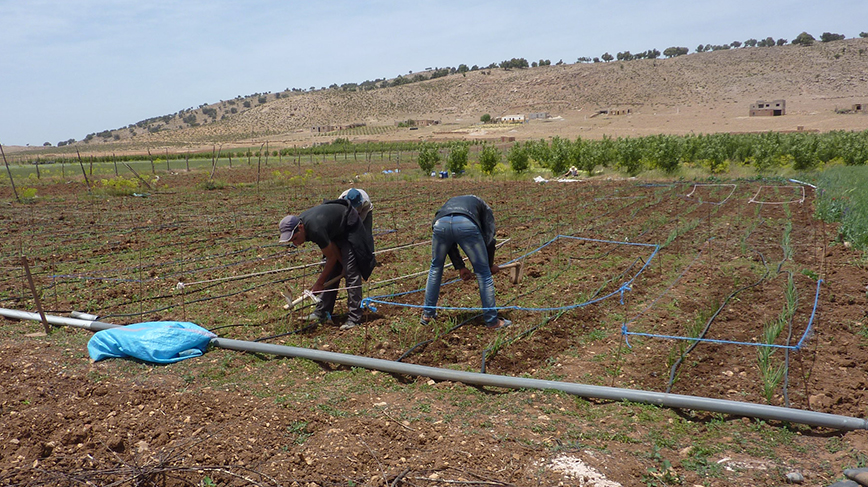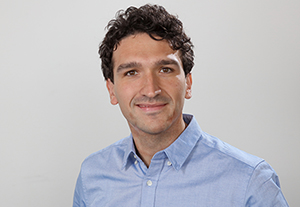Science that ‘hits the spot’ for peace, sustainable development

On UN World Science Day for Peace and Sustainable Development, Francesco Fuso-Nerini reflects on the importance of scientific research to inform decision-making and international cooperation.
Francesco Fuso-Nerini is an Associate Professor in KTH’s division of Energy Systems (KTH-dES), where he focuses on multi-disciplinary sustainable development-related issues – including how energy policy choices, climate change and AI will affect the achievement of the UN’s Sustainable Development Goals.

You use the UN’s Sustainable Development Goals as a framework for analyzing trade-offs and synergies between technological progress and human development. What does World Science Day for Peace and Sustainability mean for you?
For those of us in research every day is World Science Day. But we have a number of projects that touch on these areas specifically. Some of the UN SDGs are about peace and institutions, but what our research has shown is you cannot achieve any of these SDGs in isolation from the others. Everything is interrelated.
Right after the adoption of the SDGs in 2015, we began exploring the way in which decisions in energy systems, climate change and even AI relate to all of these goals. And we looked into coordination of sustainable development priorities at the national and regional level that ultimately, one hopes, will steer a better dialog and support these processes.
So you have real engagements with governments on these linkages.
Right. With knowledge from a scientific base, we can create a way for decision-makers and stakeholders to understand these interlinkages and priorities. We put them on the table so that there can be a more informed discussion and hopefully a resolution of a number of issues.
The international agencies which we work with, like UN-agencies and the World Bank, act as facilitators for these processes. These agency gather experts and researchers to work on issues like the coordination of SDGs, strategies and analyses of the nexus between resources such as land, energy and water. Usually these processes are very participatory.
How does it work?
We have been doing work in for example,
Jordan and Morocco
, trying to help the ministries of these countries coordinate land use, water and energy strategies, and what we do is we start from the research side. We try to model and quantify how these systems and the decisions around them are intertwined, and at the same time maintain a constant dialog with stakeholders, to get feedback whenever possible. And we give training. We train the local ministries and analysists in the models that we develop to show how policy in, say, the energy sector can affect the climate, land and water. So that once our work is done, the people in the country can keep improving the analysis and form better policy decisions.
In Jordan, for example, one of the most water scarce countries in the world, there is competition for water for municipal uses and for irrigation. There’s run-off from agriculture, intrusions that pollute ground water. Almost half of the water is lost due to inefficiencies in the system. So we collaborate with the UN Food and Agricultural Organization and SEI to try to have a dialog with local stakeholders: what are their priorities and what issues they might have? And then based on that, we do models and analyses to quantify all of the possible policies, all of the possible future decisions, and look at different scenarios of development with all of the possible outcomes. What happens if we increase irrigation efficiency across the country? What if we install solar pumping to replace diesel?
Then we go back to the country and show them the results and see if that helps with their coordination. We meet with the ministries for agriculture, environment, energy, and have them sit together and have a dialog around the analysis.
KTH-dES also introduced a tool for electrification of communities in the developing nations.
Yes, that is something this team accomplished through years of work with many talented researchers We led the creation of what is probably the most used electrification tool in the world. The latest numbers show that there is around 800 million people without access to electricity in the world, and if you don’t have electricity, it affects schools, hospitals – really everything.
This tool compares the electrification options for electricity access, for instance if you want to compare a small solar panel with a battery and lights against a mini grid that can electrify a whole village, or connect to the main grid, which can be a few kilometers away. In the last few years not only did we launch the tool online on platforms hosted by UN Department of Economic and Social Affairs and the World Bank, we have done a lot of trainings on this tool. More than hundred representatives from over 30 countries have attended trainings on it – and we reached even more by having the results from our analyses were featured in several of the IEA World Energy Outlook, widely considered as the gold standard of energy analysis.
What is the tool called?
OnSSET, that’s Open Source Spatial Electrification Tool. The OnSSET tool was also used as an engine for the World Bank´s Global Electrification Platform.
Again after these trainings some of these governments tell us that they use the tool now for their electrification planning. What was born from a science project trying to create a model with maps comparing electricity access between different generation methods is now a something actually used in energy ministries in some of these countries struggling with energy poverty. This can make a difference that helps attract investment and making the right decisions.
What’s the latest news on this project?
We have been working with the World Bank in specific countries, most recently with Benin and Somalia on a plan for electrification for their country.
That’s real impact.
We do what we can. Most scientists are interested in a positive impact from their work. In many cases the best we can do is produce these kinds of analyses around sustainable development, around the management of different resources, which ultimately can support peace processes and dialog across sectors.
We can’t make the decisions for them. What we can do is present the best unbiased analysis and hope that these hit the spot.
David Callahan

